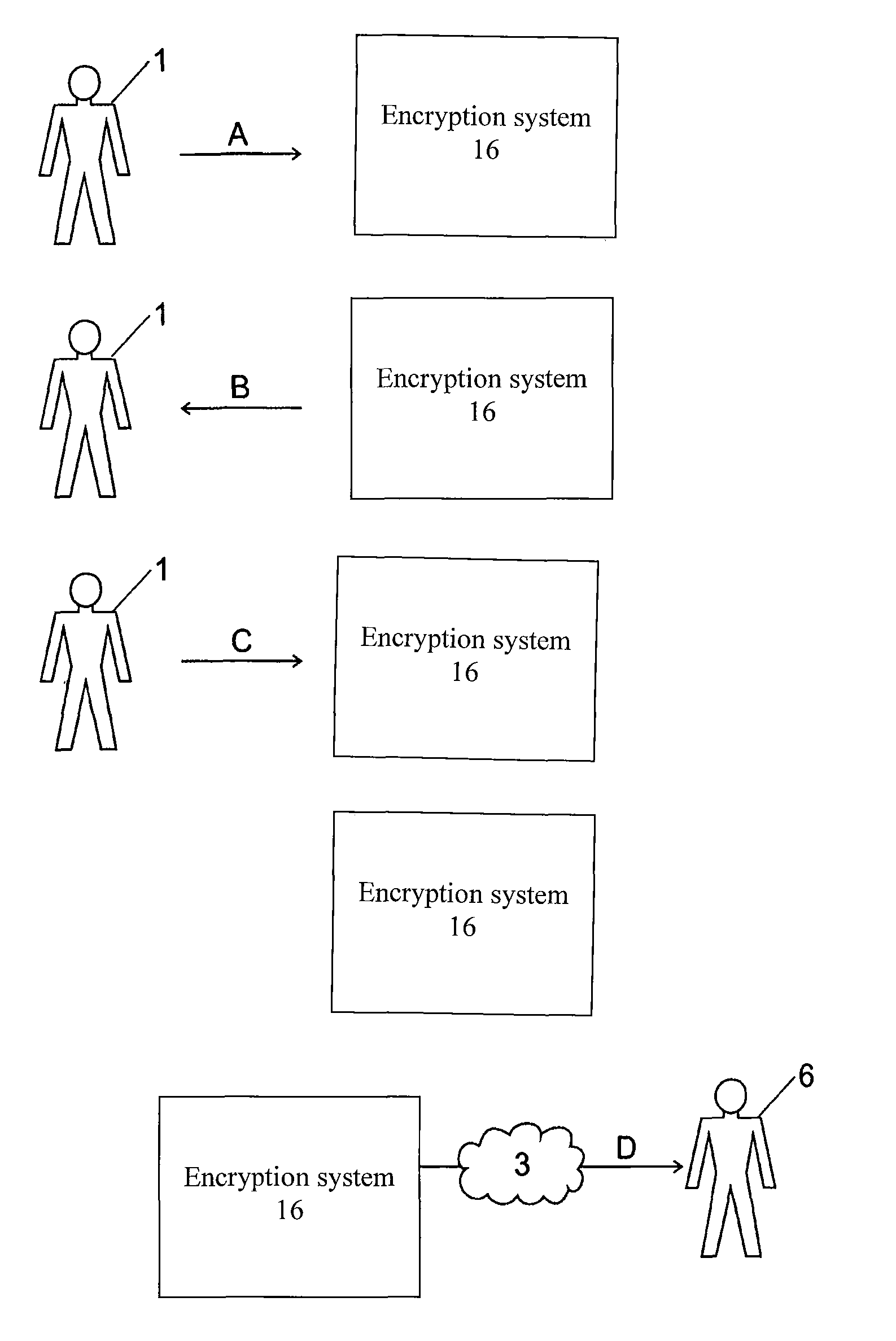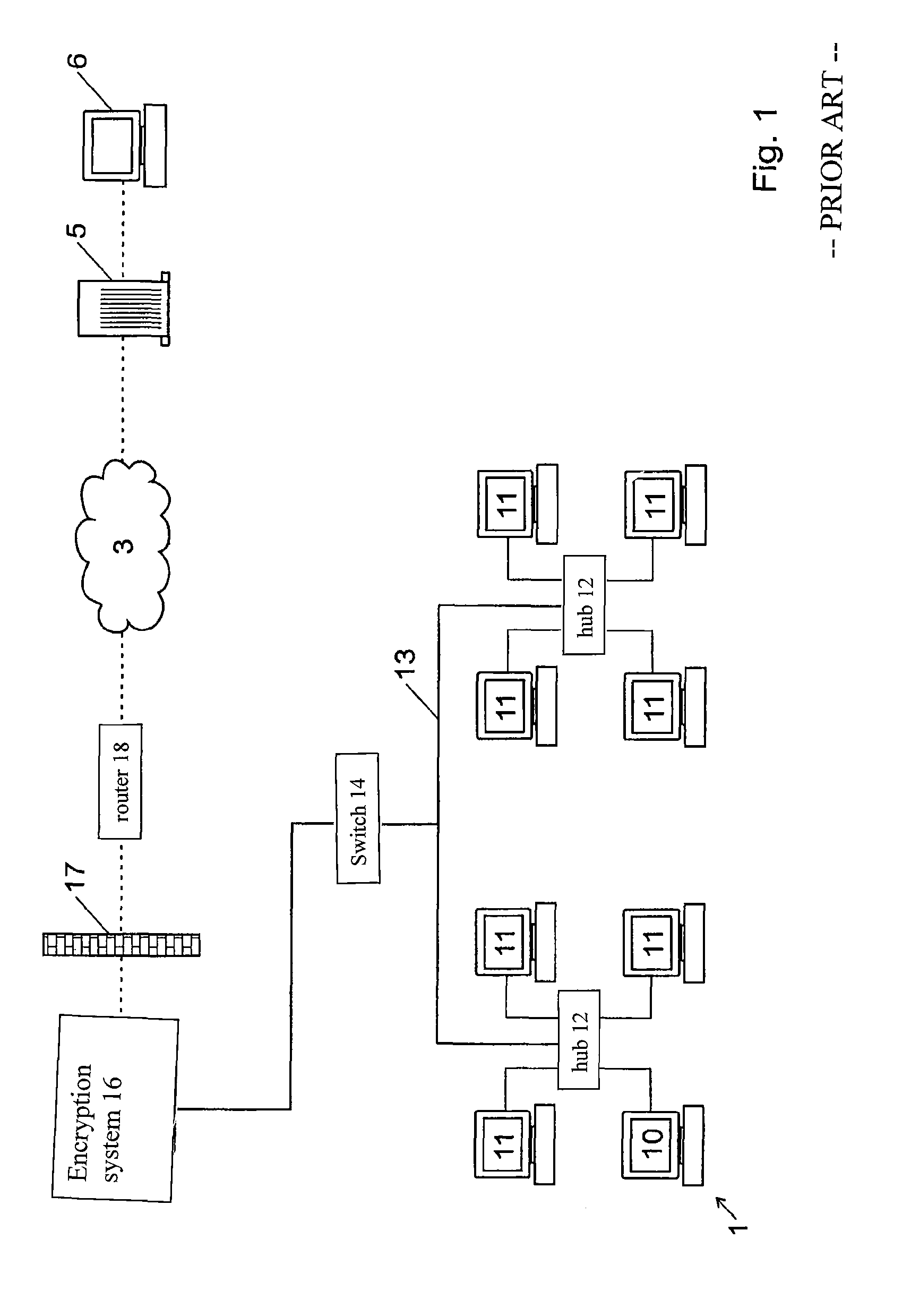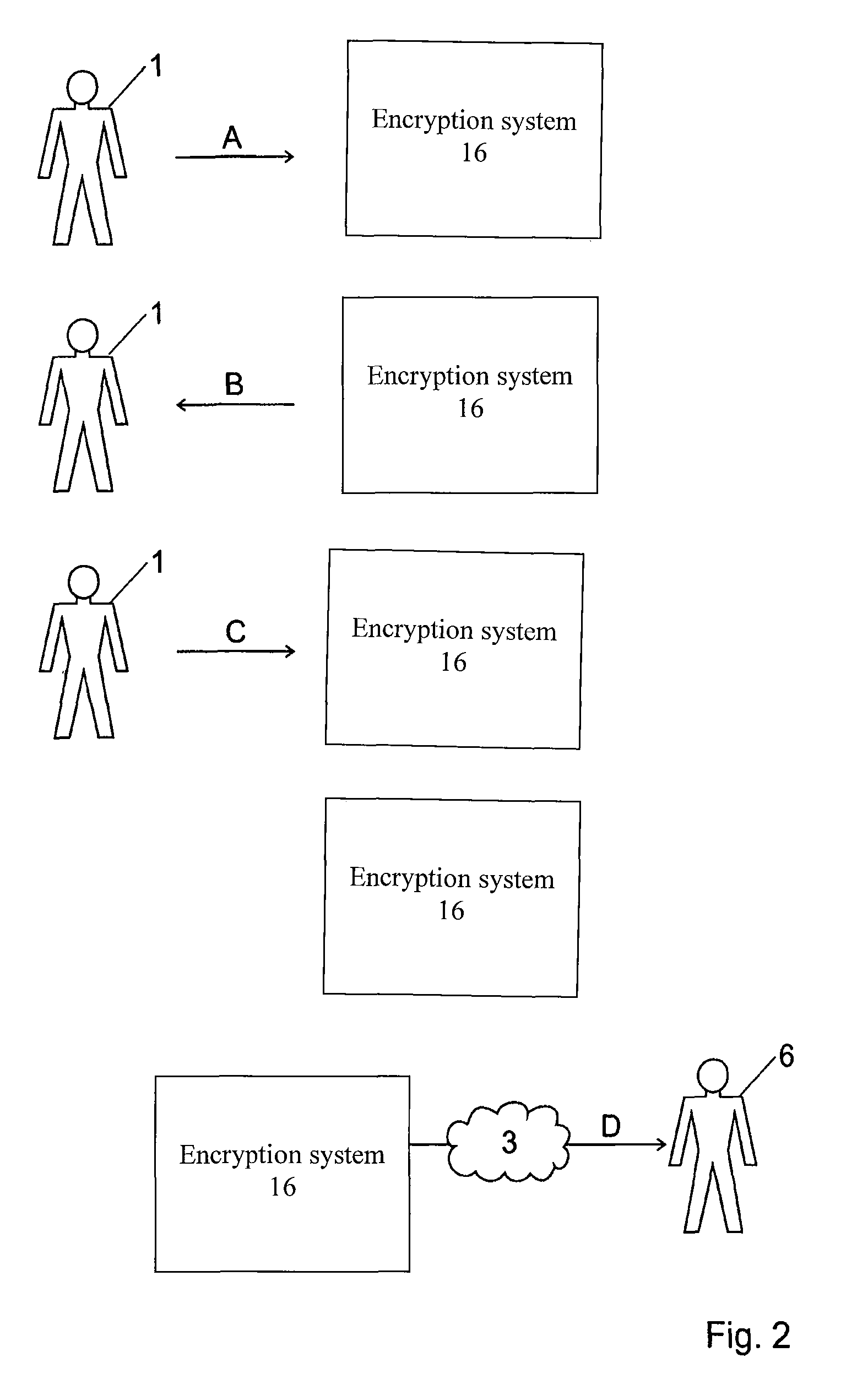End-to-end encryption method and system for emails
a technology of encryption method and encryption system, applied in the field of encryption method for emails, can solve the problems of inability to achieve comprehensive security without encryption, inability to install recipients' certificates, cumbersome installation of recipients' certificates, etc., and achieve the effect of easy installation or installation, and without losing control over the conten
- Summary
- Abstract
- Description
- Claims
- Application Information
AI Technical Summary
Benefits of technology
Problems solved by technology
Method used
Image
Examples
Embodiment Construction
[0039]In the following section of the description and in the claims, when we talk about a “private network”, it can be a local area network (LAN), a plurality of mutually connected local area networks, a VPN (virtual private network), or a plurality of mutually connected LANs and / or VPNs and / or WLANs. Thus, parts of the network may be public; a feature of the private network is however that it must be possible to install in the network an encryption system which will be able to decrypt secure emails; a relationship of trust must therefore exist between all users of the private network and the administrator of the trusted encryption system. In most embodiments, the private network has an administrator that also administrates the encryption system.
[0040]When we say “certificate” or “public key”, we mean the same, except when specifically stated. To encrypt data using symmetric and / or asymmetric encryption, the public key of the recipient of the data is needed. A certificate is simply ...
PUM
 Login to View More
Login to View More Abstract
Description
Claims
Application Information
 Login to View More
Login to View More - R&D
- Intellectual Property
- Life Sciences
- Materials
- Tech Scout
- Unparalleled Data Quality
- Higher Quality Content
- 60% Fewer Hallucinations
Browse by: Latest US Patents, China's latest patents, Technical Efficacy Thesaurus, Application Domain, Technology Topic, Popular Technical Reports.
© 2025 PatSnap. All rights reserved.Legal|Privacy policy|Modern Slavery Act Transparency Statement|Sitemap|About US| Contact US: help@patsnap.com



